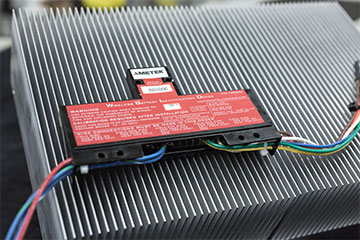Author: Josh Johnson
SII Semiconductor Corp. Introduces a New 2-to-3-Cell Secondary Battery Protection IC for Rechargeable Li-Ion Batteries
Getting Battery Energy Storage Systems Installed in the Built Environment
Contributed commentary by Laurie Florence, Principal Engineer, UL
Battery energy storage systems are being utilized for numerous applications including support for intermittent renewable energy sources, grid balancing and load leveling, reliability and resiliency, and providing costs savings to users by providing power during peak/high cost times. Utilities have been installing energy storage at various utility controlled areas to provide renewable support or ancillary services. More recently, these systems are being installed at commercial sites, on private property and even within mixed occupied buildings including residential locations. Read more about Getting Battery Energy Storage Systems Installed in the Built Environment …
TM4 Expands its Product Offering with the Launch of a Bi-Directional Charger Inverter
Silatronix Awarded Navy ONR Contract to Enable Safe, High Stability LTO Based Li-Ion Batteries Using Organosilicon Electrolytes
Ultra-Fast Charging: Respecting the Limits of a Battery when Feeding
Content Contributed by Isidor Buchmann, CEO & Founder, Cadex Electronics, Inc.
Consumers demand faster charging times. Leading in this movement is the electric vehicle (EV) industry that strives for charge times similar to filling up a vehicle at a gas station. Pumping 50 liters (13 gallons) of fuel into a tank holds a calorific value of 600 kWh. The fill-up is quick. An EV battery, in comparison, only stores between 50 to 100 kWh of energy and charging takes a long time. Read more about Ultra-Fast Charging: Respecting the Limits of a Battery when Feeding …











